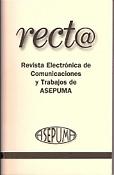Preference-based Evolutionary Multi-objective Optimization for Solving Fuzzy Portfolio Selection Problems
DOI:
https://doi.org/10.24310/recta.18.1.2017.19912Keywords:
Portfolio selection, Preference-based evolutionary multi-objective optimization, Pareto optimal solutions, Credibility distributions, LR-fuzzy variablesAbstract
In this work, we address the multi-criteria paradigm of the portfolio selection problem and consider a preference-based evolutionary multi-objective optimization algorithm to find Pareto optimal portfolio solutions based on the investor preferences. Firstly, we propose a three-objective optimization model for portfolio selection, in which the uncertainty of the portfolio returns is modelled by means of an LR-power fuzzy variable. In the model, three criteria are considered, which are the credibility expected value of the returns (to be maximized) and two measures of the risk (both to be minimized): the belowmean absolute semi-deviation and the fuzzy value-at-risk. Besides the budget constraint, a cardinality constraint and lower and upper bound constraints for the assets are also considered. The resulting model, called a credibility mean-absolute semi-deviation value-at-risk (MASdVaR) model, is a non-linear and nonconvex multi-objective optimization problem which is solved by means of the preference-based evolutionary algorithm WASF-GA. In WASF-GA, the preferences are expressed by means of aspiration values that the decision maker would like to achieve for the objectives. In the MASdVaR model, the investor aspiration values considered for the objectives are calculated assuming a conservative profile. The results obtained for a case study based on the Spanish stock market show that the portfolios generated with the highest expected returns improve the aspiration values considered for the two risk measures. Besides, portfolios with intermediate values for the expected return achieve lower values for the risk measures, but they still improve their aspiration values and thus represent less risky investment options for the investor.
Downloads
Publication Facts
Reviewer profiles N/A
Author statements
Indexed in
-
—
- Academic society
- N/A
- Publisher
- UMA Editorial. Universidad de Málaga
Downloads
Published
How to Cite
Issue
Section
License

This work is licensed under a Creative Commons Attribution-NonCommercial 4.0 International License.









